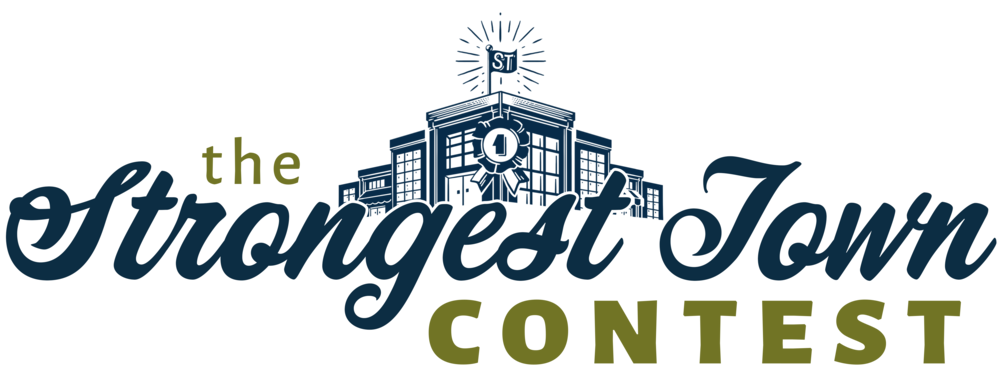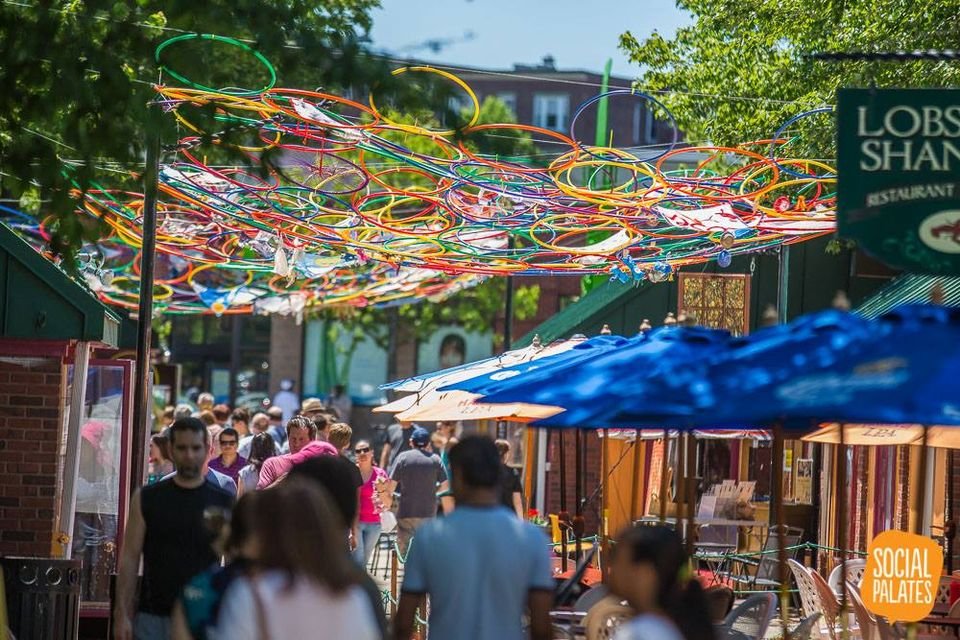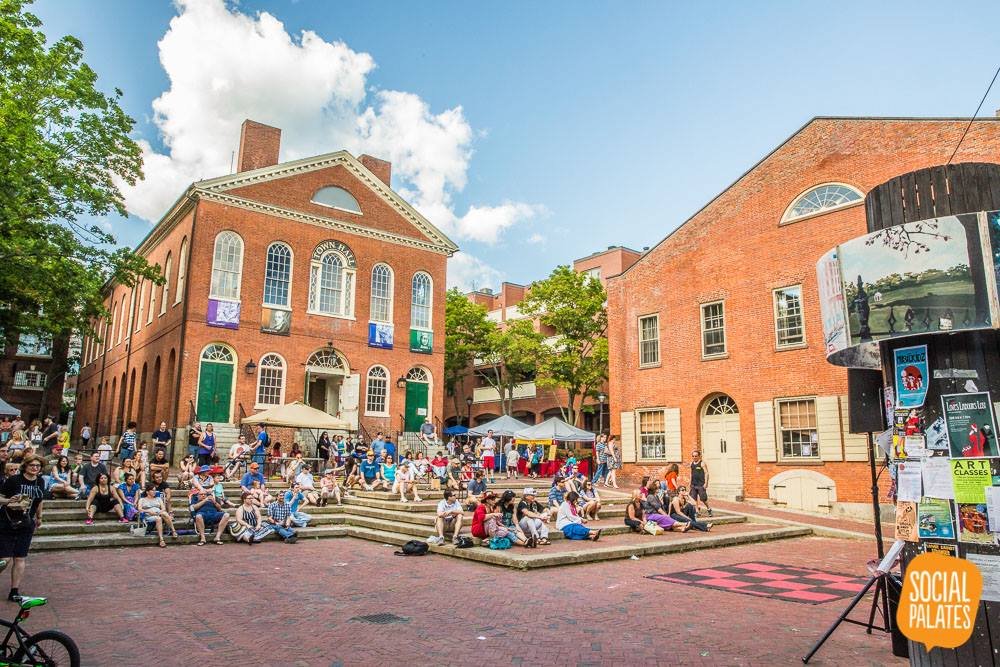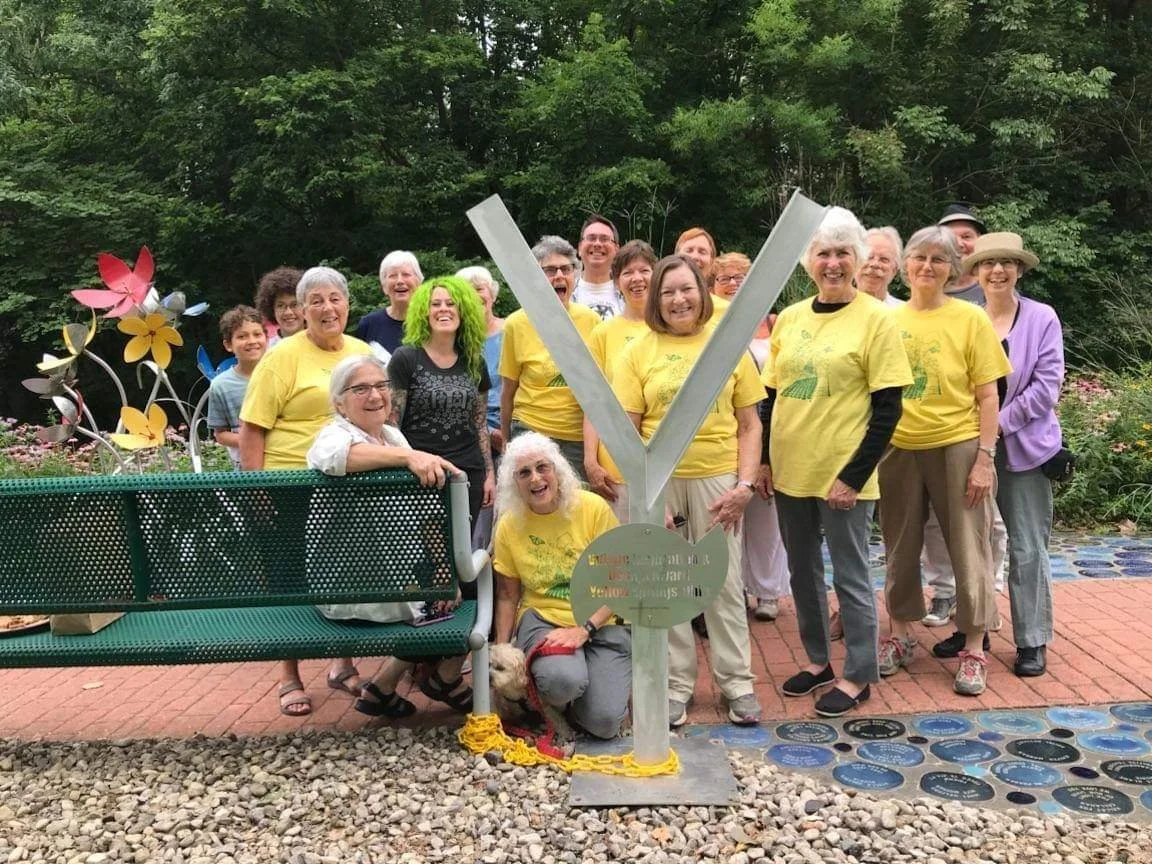Strongest Town 2022, Round 1: Salem, MA vs. Yellow Springs, OH
Welcome to this first round match-up in the seventh annual Strongest Town Contest! In this round, 16 towns are facing off, and eight will advance to the next segment of the contest based on your votes. We invite you to read answers representatives from these two cities provided to our questions about economic resilience, citizen involvement, community response to the pandemic, and more. Then vote for the strongest at the bottom of this page.
Can’t decide? If you’re looking for inspiration, check out how we describe the Strong Towns approach.
You may vote once per match-up. Round 1 voting closes at noon CT on Thursday, March 3. For rules, and to follow along with the contest, visit the Strongest Town Contest page.
Note: All entries are lightly edited for clarity and readability.
SALEM, MA
Entry submitted by: John Andrews.
What is your favorite thing about your town?
The resiliency through crisis and the way everyone came together to help get through the pandemic.
What is the biggest challenge your town faces, and what are you doing to address it?
There is almost a new wave of gentrification happening, and our creative community is doubly feeling the impacts between that and COVID. We need to foster more equity in the creative community and to create awareness and understanding of the importance of the creative community to our city.
What transportation options exist in your town for people of varying ages, abilities, and means? How easy is it to live in your town without regular access to a car? What transportation investments has your town recently made or is it in the process of making?
Ride shares, bike shares, public transportation...plus major investment recently in a new bike-share program.
Tell us about your community's local economy. Who are the key players, big and small, and how do they help your town to be financially strong and resilient? What local businesses are you most proud of?
I couldn't narrow down who I am most proud of, honestly. We have such an amazing cross section of legacy businesses and newer entrepreneurial business owners. We are a mostly seasonal tourist community, with late summer to fall being our busiest time. We have a bevy of folks trying to help, from Salem Main Streets to Destination Salem, our local destination marketing organization.
If we took a walking tour through your town, what would we see? How does your community use its land productively to promote long-term financial resilience?
History, public art, eclectic small businesses. It's an interesting blend of development and small businesses. We have public spaces, but they are not activated as much as they could be, due to lack of funding and understanding.
How easy is it to become an entrepreneur or a small-scale developer in your town? What kinds of support are available for a resident who wants to open a business or build on a small vacant lot?
Pretty easy. The opportunities are great, the funding is less than great, but if you are driven, there’s a lot of room for "trying things out." We have a few support systems from the local Chamber of Commerce, Salem Main Streets, the Enterprise Center at Salem State, and more.
At Strong Towns we believe financial solvency is a prerequisite for long-term prosperity. What do you consider your most potent (existing) tax producing property? Where does your revenue come from? What do you spend it on?
Lots of revenue comes from motels, hotels, and meals tax.
At Strong Towns, we believe that local government is a platform for strong citizens to collaboratively build a prosperous place. How are residents in your town involved in shaping its future? How do residents’ experiences, struggles, and concerns directly inform the projects undertaken by local government? Provide one or more examples.
Our residents are extremely involved and extremely vocal in their wants and needs. There are ample lines of communication to the local government and pretty much all the players are pretty accessible to the public
YELLOW SPRINGS, OH
Entry submitted by: Brian Housh, Josue Salmeron, Erica Thomas, Johnnie Burns, Denise Swinger, Marianne MacQueen, Lisa Kreeger, Kevin Stokes, Carmen Brown, Matt Dillon, Judy Kintner, Phillip O'Rourke.
What is your favorite thing about your town?
Yellow Springs has been coined "Everyone's Favorite Place" and is often ranked as a Top 10 Coolest Town or Most Beautiful Place, but the tagline that resonates with me the most is "Be Yourself Here," emphasizing that our village walks the talk in terms of delivering on our commitment to "[b]e a welcoming community of opportunity for all persons regardless of race, age, sexual orientation, gender identity, ethnicity, economic status, mental/physical ability or religious affiliation."
This is highlighted by our town of 3,700 hosting one of the four signature Pride events across Ohio, continuing the strong history of the Village of Yellow Springs in providing a friendly place for people of color to live and thrive since the 1800s. Our creative culture is fueled by a diversity of artists, academics, entrepreneurs and Antiochians—the impact of Antioch College’s recognition that “authentic social and community engagement is vital for those who strive to win victories for humanity” is palpable when you reside in or visit our community.
The fact that our Village sustains more than 80 nonprofits underscores the openness and acceptance of our community ethic, resulting in a vitality that few cities can match as expressed through authentic cultural events, passionate community conversations, and fun engagements that bring everyone together such as our neighborhood block parties. Yellow Springs continues to innovate with policies that promote equity and inclusion, recently codifying protections for economically disadvantaged renters and to mitigate gentrification via restrictions on short-term lodging.
What is the biggest challenge your town faces, and what are you doing to address it?
Affordability, as with many communities, is the biggest challenge that our town faces. With our schools of excellence, thriving downtown, liberal vibe and access to various recreational amenities, Yellow Springs has attracted new residents with significant wealth while market pressures make it harder and harder for long-time Villagers to afford to stay. Village Council has prioritized affordability in its annual goals for the last five years, and several meaningful policies have resulted such as heavily restricting nonowner-occupied transient guest lodging with an affordability mitigation fee for the few that do operate as well as a utility round-up program.
Given the critical aspect of housing when addressing affordability, local government has facilitated the building of pocket neighborhoods with permanently affordable housing units, and taken bolder actions such as purchasing an apartment building—being marketed to convert to high-end condos—so that we could maintain 16 affordable rentals. These impactful activities have been directed by the 2018 Bowen Housing Assessment, which led to the Villager Manager’s Housing Advisory Board that guided intentional planning efforts to start making a real difference regarding affordability; several grants have been secured due to our deliberate planning. A broader collaboration among Village government, local nonprofits—including YS Home, Inc. (community land trust) and The 365 Project (anti-racism organization)—businesses, and other key stakeholders, has resulted in the creation of Inclusive & Resilient Yellow Springs, which is looking at other strategies to make our Village more affordable so that we can continue to be a diverse and healthy community.
What transportation options exist in your town for people of varying ages, abilities, and means? How easy is it to live in your town without regular access to a car? What transportation investments has your town recently made or is it in the process of making?
The Village of Yellow Springs is an ideal community to age in place, given the walkability and bikeability of our town. Yellow Springs is a Bike Friendly Community and a Buckeye Trail Town. The Village was among the first in Ohio to adopt a local Complete Streets policy, based on the award-winning plan of our MPO, but customized to our Village so that we actively recognize all ages and abilities in our decisions, which included adding mobility devices. Yellow Springs is fortunate to be part of the “nation’s largest paved trail network,” and we have leveraged this AT infrastructure as a positive economic, health and environmental driver.
A citizen-led active transportation committee helped the Village develop a state-funded YS AT Plan in 2019, leading to a second SRTS grant, a $2-million bike-ped focused STP grant, and CDBG grants to promote accessibility. These projects are building more sidewalks and improving the connectivity and safety of our pedestrian network. YS has a downtown with grocery, hardware and drug stores, laundromat and bank, so regular access to a car is not required for many. There is reliable public transit that gets folks to larger municipalities with more options for food, healthcare, and education. Besides securing significant grant dollars with local match, local government invests annually in sidewalk maintenance—often grinding sidewalk to do more—and has also committed funds that support collaborative trails projects with nonprofits and surrounding jurisdictions that are greatly expanding accessibility to recreational amenities for all ages and abilities.
Tell us about your community's local economy. Who are the key players, big and small, and how do they help your town to be financially strong and resilient? What local businesses are you most proud of?
Yellow Springs had several large employers in town prior to 2000, providing significant revenue for the Village, particularly given that many of our residents were able to work locally. With the loss of all but one of these major companies, YS pivoted to focus on its long history as a destination town, which began with the coveted healing powers of the former hot springs located in what is now Glen Helen Nature Preserve. Our 70+ shops, restaurants, and wellness businesses attract many visitors from the region and around the state, and new investments in entertainment venues will further drive our local economy—on a nice day, it is common for our community of 3,700 to expand to 10,000, and our annual Street Fairs bring over 25,000 people to town for the day.
Notably, our nonprofits are key players in the local economy, not only because they employ many community members, but also because their activities generate local spending and investment. It has been inspiring to directly experience the resilience of our businesses, most of which have been quite successful during the pandemic. Sunrise Café, for example, has begun delivering food, helping to keep the operation thriving. Also, downtown shops such as Urban Handmade and Greene Canteen embraced the local mask mandate—YS was the first Ohio municipality to legislate this policy—and many customers specifically came to our Village because they knew they would be safe. The Downtown Business Association has formed to harness the collaborative energy among local businesses.
If we took a walking tour through your town, what would we see? How does your community use its land productively to promote long-term financial resilience?
What you might first notice, walking through Yellow Springs, is the lack of conformity in building and housing design; at the same time, you would also be intrigued by the ubiquity of signage and art, coming in all shapes and messages. Two major initiatives that illustrate productive land use are municipal broadband and Village solar. Springs-Net, a collaborative of residents with key expertise in building out and servicing fiber networks, saw the opportunity for municipal broadband given that the Village of Yellow Springs has an electric utility and owns its poles, that there is a prominent data center in town, and that there is an existing fiber backbone.
We are now at the point of launching a pilot project for 300 homes, much of which is grant-funded, allowing the Village to provide affordable, fast, and reliable Internet service that will support existing businesses and attract home-based entrepreneurs who want to live and work in our community. Local government has been actively supportive of solar initiatives, and we promote community solar through policies. The Village is now pursuing projects on public land that will lead to cost savings for residents and also allow them to participate in generating solar energy if not able to at their homes or rentals. Certainly, we see investments in housing as critical to long-term financial resilience, both in terms of local jobs and local customers, and are looking to dedicate land to affordable rentals and further improving our zoning code to promote infill and inclusionary policies.
How easy is it to become an entrepreneur or a small-scale developer in your town? What kinds of support are available for a resident who wants to open a business or build on a small vacant lot?
The Village of Yellow Springs has worked intentionally to remove barriers for those wanting to become entrepreneurs in our community, and we have recently made it easier for small-scale developers by establishing our own building department due to complaints we were receiving about delays with county services. A small vegan restaurant is a current example of getting up and running quickly with the support of our Village Team. Our Village Manager, Public Works Director, and Zoning Administrator work closely with commercial and residential investors to assess their needs and connect them with the proper resources.
Yellow Springs has its own water, sewer, and electric, providing a key advantage to local business owners, and with our municipal broadband utility being implemented, YS becomes an even more attractive option for those who want to live and work in a community that values environmental sustainability, social justice, and affordability. The Village administration is highly responsive to residents opening businesses or building, and our Team has the resources and know-how to support a diversity of projects. Additionally, the YS Chamber of Commerce coordinates with local government to help acclimate new local business owners, and we are lucky to have many very engaged community members who are ready to guide and direct entrepreneurs. Yellow Springs had a reputation of being anti-development prior to 2010, and Village Council has been successful with changing this perception by employing innovative policies and exceptional services, encouraging smart growth aligned with our Village Values.
At Strong Towns we believe financial solvency is a prerequisite for long-term prosperity. What do you consider your most potent (existing) tax producing property? Where does your revenue come from? What do you spend it on?
The Village of Yellow Springs generates most of its revenue from income tax, and our most viable large employer for local jobs is Cresco—a medical marijuana cultivator and processer. While many surrounding municipalities rejected having a medical marijuana company in their jurisdictions, Yellow Springs embraced an organization that is aligned with our environmental, social, and health values. Cresco is currently expanding for a second time, bringing 50 more well-paying jobs this year and increasing its profits, which also means tax revenue for the Village. The Center for Business & Education, where Cresco is located, has 10 more acres for commercial development, and our focus is on activity that complements and develops our local economy; the YS Development Corporation is leading efforts to determine how to best use this land, with local food initiatives determined to add significant value.
Four years ago, Yellow Springs was able to again balance its budget despite the 50% decrease in the Local Government Fund and other changes in state policy that have degraded municipal revenue streams. The Village has continued to maintain a balanced budget through the pandemic, and we have learned that investments in our facilities are important, having suffered the costly effects of prior deferred maintenance practices. The Village Team has also become very skilled at securing grants; by spending a small amount for match, we inject much more money into our critical projects as well as into investments in such areas as solar and broadband for future growth.
At Strong Towns, we believe that local government is a platform for strong citizens to collaboratively build a prosperous place. How are residents in your town involved in shaping its future? How do residents’ experiences, struggles, and concerns directly inform the projects undertaken by local government? Provide one or more examples.
Yellow Springs has an incredibly involved citizenry, and our meetings provide an open amount of time for community members to provide input. We have also been proactive in terms of getting our meetings and work sessions out to the public via YouTube, Facebook Live, and other online venues while still accommodating our residents who prefer to watch via our cable access station. The Village has also invested in platforms such as iWorQs to improve communications with community members and service quality.
Yellow Springs has always had many active citizen groups that engage regularly with Village Council, and the number of these coalitions have certainly grown, leading to robust citizen input. Our Justice System Collaborative Committee highlights the importance of diverse and active community engagement to address local policing issues; this forum was intentionally designed to be open to all stakeholders, and was largely driven by YS Speaking Up for Justice, a youth group that came to Village Council with specific demands for reform. Many of these policy changes had been prioritized but action was slowed when the pandemic hit—this citizen-led advocacy pushed local government to re-focus on these concerns and take meaningful action. The Village is planning to pilot participatory budgeting this year to further engage community members, and we are also looking to establish a Citizen Review Board to build stronger relationships between residents and police officers. Notably, Council asks for citizen feedback during our annual goal setting, and this has been helpful in refining our priorities.





